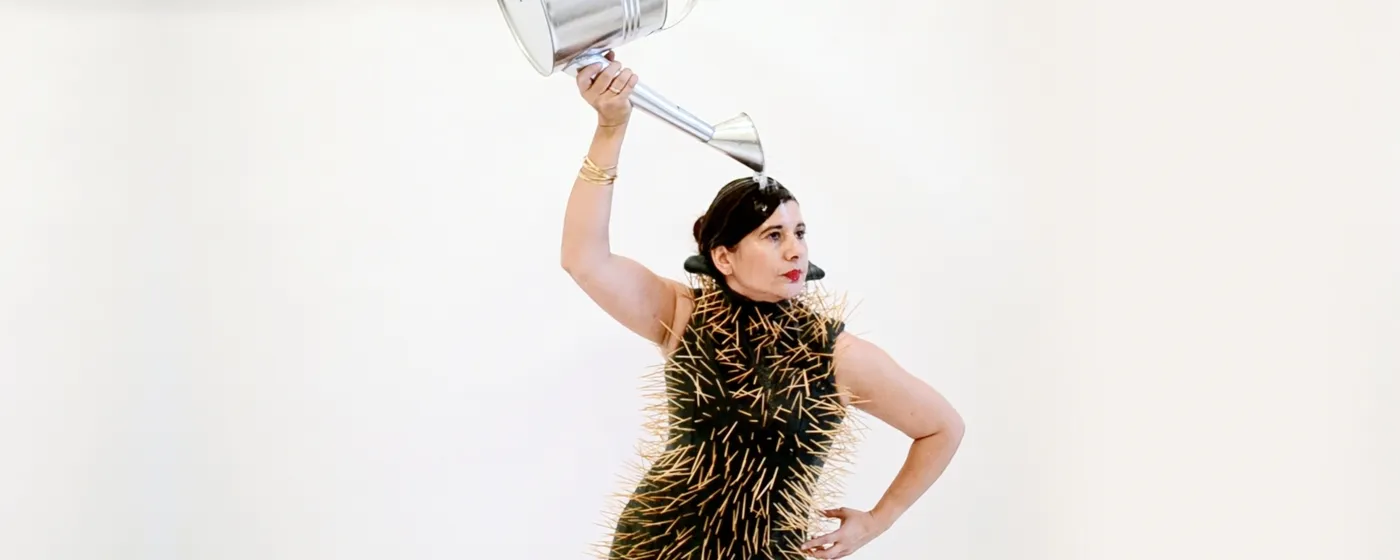
Nezaket Ekici: Transformation of Daily Life
Daily life tasks are what Any Body Knows, right? But beneath the surface of the ordinary lie scenarios, rituals, and fairytale plots. Some feel familiar; others stretch to the edge of fantasy. Any action can be rethought and repurposed. Any simple habit can become a source of inspiration. And that is what this solo show by Nezaket Ekici uncovers. Nezaket Ekici uses her body as a seismograph of the present: it becomes a site of memory, resistance, and transformation. Her performances emerge from everyday life, yet always open up to universal questions of identity, migration, spirituality, and power. In her work, the boundaries between the private and the public, between ritual and rebellion, begin to dissolve. Ekici gives meaning to things by living through them performatively—every movement becomes a gesture of inquiry, exploration, and transgression. Her work becomes a constant engagement with the spaces we inhabit and the bodies we are—always in flux, always in motion. This solo exhibition presents ten outstanding video works by Nezaket Ekici, selected from 25 years of international performance practice. More than 300 works in over 70 countries bear witness to a life in art, lived in ongoing dialogue with diverse cultures, everyday observations, and personal experiences. The selection strikingly reveals how Ekici uses her body as a medium to negotiate questions of identity, culture, and art history. In Emotion in Motion (since 2000) turns a private living room into a public space: with red lipstick, the artist leaves intimate traces. — an understated reflection on closeness, memory, and presence. She makes her connection to and appreciation for the things in her private living space visible. A mindfullness work. In Hullabelly (since 2002), Nezaket Ekici reimagines the hula hoop by spinning it around her veiled head, focusing its motion solely on her neck. She presented her Performance Hullabelly in many places worldwide. The three-hour performance well recived at Venice Biennale (2003), she gives a powerful commentary on endurance, cultural identity, and the constraints imposed by society. In Atropos (since 2006) Nezaket Ekici transforms an everyday phenomenon—hair—into a symbol of existential entanglement and radical self-empowerment. Through the act of cutting and tearing away, she stages a powerful liberation from both real and symbolic prisons—a transformation of the body, space, and the everyday. In Blind (since 2007), Ekici blindly carves her way out of a cast made of thick plaster, inspired by the martyrdom of Saint Cecilia—a powerful symbol of self-liberation caught between faith and social constraint. In Fountain for 6 Women (2010), Nezaket Ekici and 5 Women, assembles women in water-filled dresses into a living fountain sculpture—a poetic image of the female body, control, and circulation. Fountain based on her ongoing performance since 2004. In Human Cactus (2012), Ekici explores what it feels like to be a plant, expressing experiences of proximity and distance. In But All That Glitters Is Not Gold (since 2014), Nezaket Ekici confines herself within a golden cage, reaching through the bars to grasp one of thirty golden keys suspended above her, each a potential means of escape. This performance serves as a metaphor for self-imposed limitations and the deceptive allure of material wealth, challenging viewers to reflect on the constraints of societal expectations and the pursuit of true freedom. In Pars Pro Toto (2019), Ekici melts a block of ice using kettles and an iron—forming a closed cycle that vividly embodies climate change and human responsibility. In Transmission (since 2020), Ekici intertwines analog sculpture and the digital world by constructing a QR code from three-dimensional objects—a performative link between real and virtual identity. In Gipfel des Glückes (2023), the artist embarks on a path of emancipation by following the rituals of mountaineers, placing a flag made from her own dress—symbolizing "freedom"—on each swing she encounters.

